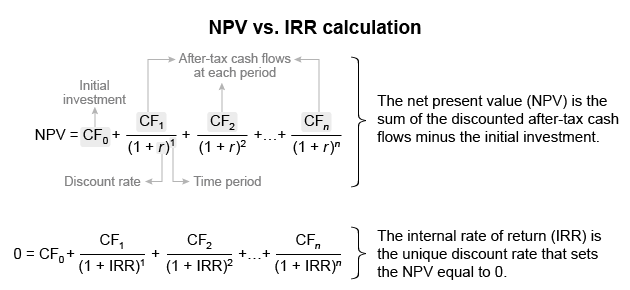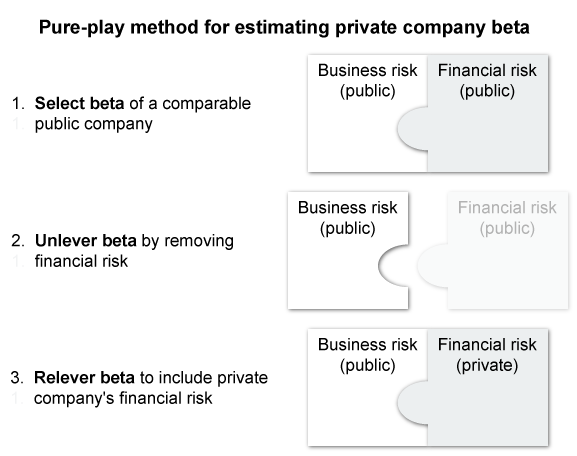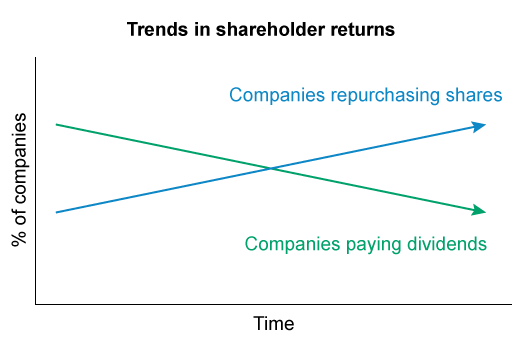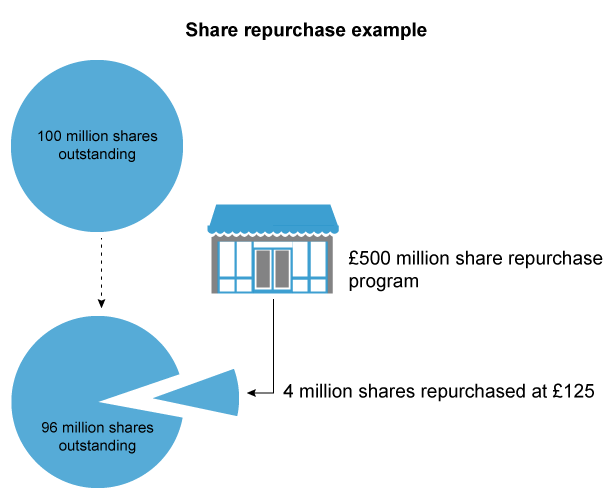CFA® Corporate Issuers
Summary, Syllabus, Topics, and Sample Questions (L1, L2, L3)
The Corporate Issuers section of the CFA exam delves into the assessment of corporate governance and the comprehension of how companies navigate investment and financing decisions. Numerous academic studies have consistently demonstrated a strong correlation between effective governance and overall financial performance. In today's landscape, environmental, social, and governance (ESG) factors have gained significant prominence, attracting attention from both investors and corporations. Consequently, evaluating how these factors impact a company's financial bottom line is imperative, thereby enhancing long-term shareholder value and informing managerial decisions regarding financing and investments.
Financial analysts must nurture their capability to discern the risks and investment opportunities associated with various short- and long-term financing options and strategies. This aptitude empowers management to judiciously utilize leverage and working capital in decision-making. The Corporate Issuers topic also encompasses the ramifications of mergers and acquisitions on corporate structures, evaluating their relative value and benefits for all parties involved. Notably, candidates will discover the content covered in Corporate Issuers to be intricately intertwined with materials from Financial Statements Analysis and Quantitative Methods. Despite its relatively modest weightage, the concepts explored in Corporate Issuers constitute the bedrock of corporate finance knowledge throughout the CFA Program.
What to Expect in CFA Level 1 Corporate Issuers?
The subject of Corporate Issuers, previously referred to as Corporate Finance, holds a relatively lower weight in the CFAI curriculum. Corporate Issuers serve as an initial exploration into corporate financing investments, constituting approximately 6-9% of Level 1 readings. Within this area, candidates will delve into the growing impact of environmental, social, and governance (ESG) factors on a company’s financial performance, the intricacies of capital allocation, and the evaluation of potential capital investment prospects.
Exam Weighting
The CFA Corporate Issuers topic has a weight of 6-9% of the CFA Level 1 exam, so approximately 11-16 of the 180 CFA Level 1 exam questions focus on this topic.
| Topic Weight | No. of Learning Modules | No. of Formulas | No. of Questions |
|---|---|---|---|
| 6-9% | 7 | ca. 40 | ca. 16 |
Level 1 Corporate Issuers Syllabus, Readings, and Changes
The CFA Level 1 curriculum for 2024 comprises a total of 7 Learning Modules. Notably, the curriculum has undergone revisions from the 2023 version, placing increased emphasis on Working Capital and Investment-focused readings. The current Learning Modules reflect these changes, providing candidates with a more refined and updated content structure:
| Corporate Issuers L1 Changes | |
|---|---|
| Organizational Forms, Corporate Issuer Features, and Ownership | Updated |
| Investors and Other Stakeholders | New |
| Corporate Governance: Conflicts, Mechanisms, Risks, and Benefits | Updated |
| Working Capital and Liquidity | New |
| Capital Investments and Capital Allocation | No Changes |
| Capital Structure | No Changes |
| Business Models | Major Revision |
Organizational Forms, Corporate Issuer Features, and Ownership
Candidates need to compare organizational forms, describe corporate issuer features, and differentiate between publicly and privately owned companies. This entails understanding various business structures, articulating key corporate issuer attributes, and recognizing the distinctions and implications of public versus private ownership. The goal is to ensure a nuanced understanding of organizational forms, corporate issuers, and ownership dynamics in a concise manner.
Investors and Other Stakeholders
Candidates must compare the financial claims and motivations of lenders and shareholders, articulate a company’s stakeholder groups and compare their interests, and describe the environmental, social, and governance (ESG) factors considered by investors in evaluating corporate issuers.


Corporate Governance: Conflicts, Mechanisms, Risks, and Benefits
In this section, candidates are tasked with a comprehensive understanding of corporate governance, focusing on the principal-agent relationship, mechanisms for stakeholder management, and the risks and benefits associated with effective governance practices:
- Understand the intricacies of the principal-agent relationship and identify potential conflicts among stakeholder groups.
- Explore the concept of corporate governance, delving into the various mechanisms employed to manage stakeholder relationships and mitigate associated risks.
- Emphasize the significance of recognizing and addressing potential risks linked to poor corporate governance and stakeholder management, while highlighting the substantial benefits derived from effective governance practices and engaged stakeholder relationships.
Business models
This new learning module introduces various business models and explores their use in financial analysis. The material discusses how models can be used to
- Forecast profitability
- Describe the competitive environment
- Assess pricing pressures and cost margins
and generally recognize the forces at work in the firm’s environment and project how those forces will affect the firm’s potential risk and returns.
Capital Investment (formerly Uses of Capital)
- This reading covers how companies allocate capital assets and make investment decisions. Candidates will learn to draw connections between a company’s share price and its investment and value.
- The importance of net present value (NPV) valuation and internal rate of return (IRR) in capital allocation is a keystone of this reading and corporate finance in general. Candidates will encounter quite a bit of theory alongside technical calculations.
- This section provides candidates with the knowledge to avoid common capital allocation pitfalls in order to determine whether a project is economically viable.
Working Capital and Liquidity
- Candidates will explore the cash conversion cycle and compare issuers’ cash conversion cycles
- The readings explains liquidity and compares issuers’ liquidity levels
- Candidate will also learn issuers’ objectives and to compare methods for managing working capital and liquidity
Capital Investments and Capital Allocation
The focus of the topic is on understanding various types of capital investments, exploring the capital allocation process, including the calculation of net present value (NPV), internal rate of return (IRR), and return on invested capital (ROIC), and contrasting their applications in capital allocation. Additionally, the topic delves into the principles of capital allocation, highlighting common pitfalls. Furthermore, candidates are expected to describe types of real options relevant to capital investments.
Capital Structure
The particular combination of debt and equity a company uses to finance its operations, assets, and growth is referred to as its capital structure.
- Candidates will learn to describe changes in a company’s capital structure over time and important factors that influence capital structure decisions.
- The reading also covers how the company’s life cycle, the cost of capital, financing considerations, and competing stakeholder interests affect financing decisions.
CFA Corporate Issuers Level 1 Sample Questions and Answers
The sample questions are typical of the probing multiple-choice questions on the L1 exam. During the exam, you have about 90 seconds to read and answer each question, carefully designed to test knowledge from the CFA Curriculum. UWorld’s question bank is built to expose you to exam-like questions and illustrate and explain the concepts tested thoroughly.
According to the Modigliani-Miller propositions (with taxes), if a company increases its debt level, its market value will most likely :
- decrease since the costs of financial distress are increasing.
- remain the same since the market value is unaffected by the capital structure.
- increase proportionally to the change in debt.
Modigliani-Miller propositions
| Without corporate taxes | With corporate taxes | |
| Proposition I: value of company (MM I) |
VL = V U | V L = V U + t D |
| VL = market value of leveraged company VU = market value of unleveraged company |
t = company’s marginal tax rate D = market value of debt |
|
| Proposition II: cost of equity capital (MM II) |
re = r0
+ ( r0 – rd ) (
D
/
E
) |
re = r0
+ ( r0 – rd ) (1 – t ) (
D
/
E
)
|
| r0 = weighted average cost of capital for 100% equity company t = company’s marginal tax rate r0 = cost of equity |
D/E = debt-to-equity ratio using market values for debt and equity rd = pretax cost of debt |
The Modigliani-Miller (MM) propositions assume perfect capital markets (ie, no arbitrage, no transaction or bankruptcy costs, and symmetric information) and assert that a company’s market value equals the present value of its future cash flows. Modigliani and Miller propose that, in the absence of taxes:
- A company’s capital structure does not affect its value (MM I without taxes); and
- A company’s cost of equity (re) is directly proportional to its debt-to-equity ratio (D/E), but WACC remains constant (MM II without taxes).
However, these propositions change when there are corporate taxes:
- The market value of a levered company is greater than the value of an unlevered but otherwise identical company; tax-exempt interest payments improve the levered company’s cash flows, increasing its value. The difference in value is the amount of the debt tax shield (tD), which is the product of a company’s tax rate (t) and value of debt (D) (MM I with taxes).
- A company’s re is directly proportional to D/E, adjusted by (1 − t). Greater leverage will increase the cost of equity, but at a slower pace due to taxes. The greater the tax rate (t), the slower the increase in re when D/E increases (MM II with taxes).
Therefore, with taxes, an increase in debt will proportionally increase a company’s value and reduce its WACC.
(Choice A) The MM propositions assume no cost of financial distress.
(Choice B) The market value would remain the same in the absence of taxes.
Things to remember:
The Modigliani-Miller (MM) propositions assume perfect capital markets (ie, no arbitrage, no transaction or bankruptcy costs, and symmetric information). When these propositions include corporate taxes, greater leverage will increase a company’s market value (MM I) and reduce its WACC (MM II).
A company is considering two mutually exclusive projects with conventional cash flows. Compared to the internal rate of return (IRR), a benefit of using the net present value (NPV) as the decision criterion is most likely that the NPV method:
- avoids the risk of multiple IRRs.
- provides greater certainty of future cash flows.
- assumes reinvestment at the required rate of return.
A key difference between the net present value (NPV) and internal rate of return (IRR) as criteria for valuing projects is the discount rates used in the reinvestment assumptions. The IRR assumes cash flows are reinvested at the IRR rate, and the NPV method assumes that cash flows can be reinvested in another project at that project’s required rate of return (ie, opportunity cost of funds).
The NPV’s reinvestment rate assumption is:
- more conservative, since the project’s rate of return will be lower than its IRR when NPV is positive, and
- more realistic, since it is unlikely that the company will be able to reinvest at that rate, assuming the company first pursues its more profitable opportunities.
Since the NPV uses the more conservative and realistic reinvestment assumption, a company ranking mutually exclusive projects should prioritize based on the NPV.
(Choice A) If a project’s projected cash flows are conventional (ie, negative outlay followed by cash inflows), there will be only one IRR. In this scenario, since both projects have conventional cash flows, there is no risk of multiple IRRs.
(Choice B) The same cash flow projections are used and are equally difficult to generate whether an NPV or IRR is used to analyze investment projects.
Things to remember:
A key difference between the net present value (NPV) and internal rate of return as criteria for valuing projects is the discount rates used in the reinvestment assumptions. A company ranking two mutually exclusive projects should prioritize the NPV method since it has the more conservative reinvestment assumption.
A privately held technology conglomerate wants to estimate the cost of equity for its new robotics division by referencing the beta of a comparable robotics company that is publicly traded.
| Debt (€ millions) |
Equity (€ millions) |
Equity Beta | Tax Rate | |
|---|---|---|---|---|
| Comparable company | 150 | 450 | 1.5 | 20% |
| New robotics division | 20 | 80 | NA | 15% |
The risk-free rate is 3%, and the expected market return is 11%. Using the pure-play method, the new robotics division’s cost of equity is closest to:
- 12.47%
- 14.49%
- 15.54%
The pure-play method is used to derive a private company or division’s beta from a comparable public company. Betas are not available for private companies; therefore, analysts must:
- select a comparable public company,
- unlever the beta to remove the public company’s financial risk, and
- relever the beta to reflect the private company’s specific financial risk.
The rationale behind this approach is that firms may have similar unlevered (ie, asset) betas due to similar operating risk but different levered (ie, equity) betas due to differences in capital structure (which affects financial risk).
In this question, use the pure-play method to calculate the levered beta (ie, equity beta) for the private company’s robotics division. Then use this equity beta to calculate the cost of equity.
- Use the pure-play method to calculate the private company’s levered beta (ie, equity beta).
Steps Calculations Unlever public company’s beta to remove financial leverage impact βu, public = βu, public / [1 + ( ( 1 – t public )Dpublic / Epublic)]
βu, public =1.5 / 1 + ( ( 1 – 0.2 ) x= 1.1842150 / 450)Relever the unlevered beta above to include the financial leverage impact specific to private company βL, private = βu, public [ 1 + ( ( 1 – t private ) Dprivate / Eprivate)]
βL, private = 1.1842 [ 1 + ( (1 – 0.15) x20 / 80)] = 1.4359
- Calculate the private company’s cost of equity using CAPM.
| Re | = RF + βi [ E ( RM ) – RF ] |
| = 0.03 + 1.4359 ( 0.11 – 0.03 ) | |
| = 14.49% |
(Choice A) 12.47% results from using unlevered beta (ie, asset beta) to calculate the cost of equity. Levered beta (ie, equity beta) should be used to calculate the cost of equity since financial leverage impacts the cost of equity.
(Choice C) 15.54% results from incorrectly unlevering beta by using the inverse of the correct equation, and then incorrectly relevering beta by using the inverse of that correct equation.
Things to remember:
The pure-play method is used to derive a private company’s beta by unlevering a public company’s beta and then relevering it. Once the private company’s beta is calculated, it can be used to derive the cost of equity using the CAPM equation.
What to Expect in CFA Level 2 Corporate Issuers?
CFA Level 2 Corporate Issuers, formerly known as Corporate Finance, remains one of the more lightly weighted CFA topics on the exam. 10% of Level 2 readings are dedicated to the topic. The readings dive deeper into the evaluation of capital budgeting projects, capital structure policy, dividend policy, corporate governance, and mergers and acquisitions.
Candidates will study the company decision processes related to investment projects, dividend policies, share repurchases, and M&A.
Exam Weighting
CFA Level 2 Corporate Issuers has a weight of 5-10% of the total exam content, such that approximately 6 of the 88 CFA Level 2 exam questions focus on this topic.
| Topic Weight | No. of Learning Modules | No. of Formulas | No. of Questions |
|---|---|---|---|
| 5-10% | 4 | ca. 40 | ca. 4-8 questions or 1-2 items sets |
Level 2 Corporate Issuers Syllabus, Readings, & Changes
The CFA Level 2 curriculum includes 49 total learning modules of which 4 (8% of the total curriculum) center on Corporate Issuers. For 2024, the CFA Program curriculum’s changing approach to ESG moves away from treating it as a matter of internal corporate governance and instead places a strong emphasis on external analysis of the ESG practices of businesses. This development elevates CFA to the forefront of investment in the institute and its members. ESG is an important aspect of this way of thinking.
The Learning Modules are:
| Corporate Issuers (Formerly Corporate Finance) | |
|---|---|
| Analysis of Dividends and Share Repurchases | No change |
| Environmental, Social, and Governance (ESG) Considerations in Investment Analysis | Updates |
| Cost of Capital: Advanced Topics | Updates |
| Corporate Restructuring | No change |
Analysis of Dividends and Share Repurchases
This reading focuses on dividends on common shares paid by publicly traded companies. Companies offer dividends to shareholders as a return on their investment in a company’s equity, typically derived from a company’s net profits.
- Candidates will learn how various forms of dividends affect shareholders’ wealth and company financial ratios and valuation.
- This is understood through a comparison of different dividend policy theories and models, calculations, and analysis of broad trends in corporate payout policies.
Environmental, Social, and Governance (ESG) Considerations in Investment Analysis
Investors have become increasingly concerned with how a company is governed and its relationship to environmental and social issues. This reading explores the effects of ESG factors on a company’s bottom line by looking at investment risks and opportunities from an ESG perspective.
Furthermore, candidates will learn to distinguish between country-specific variations in ownership structures and their effects on governance policies and practices.


Cost of Capital: Advanced Topics
Picking up where the Level 1 curriculum leaves off, this new reading takes a deeper look into determining and/or estimating the costs of capital, including
- Factors that affect both top-down and bottom-up analytical models
- The costs of debt
- The different approaches to modeling the cost of equity
As always, the goal is to understand the effects of the cost of capital on firm value and investment returns.
Corporate Restructuring
This “new” learning module borrows material from the now-deleted reading on Mergers and Acquisitions, exploring more ways that a company can transform as it seeks to grow or shrink or become more efficient by absorbing the resources and capabilities of another, increasing its market power, or diversifying.
- This reading introduces candidates to the complexities and risks associated with mergers and acquisitions, as well as divestments such as spin-offs.
- Candidates will learn to explain common motivations for restructurings, contrast their various iterations, and compare the various financial advantages and disadvantages of each.
- The goal of the reading is to enable candidates to determine whether such a move would be a viable business strategy by understanding the costs, risks, and likelihood of a business restructuring actually coming to fruition.
CFA Corporate Issuers Level 2 Sample Questions and Answers
The sample questions here are typical of the L2 exam’s complexity and depth: formatted as item sets, with a vignette to deliver a scenario that tests the CFA L2 Curriculum. (On the actual exam, each vignette applies to four questions; we’ve thrown in a couple extra to get a bit more learning in). And be sure to review the illustrated explanations we’ve provided for each question: UWorld’s question bank is designed to expose you to exam-like questions and explain the concepts tested thoroughly.
Passage
Compass Engineering’s board of directors is deciding between cash dividends or a share repurchase program as a method to begin returning cash to shareholders. Liam Fischer, a member of the board, states that both cash dividends and share repurchases have certain advantages that should be considered:
Advantage 1: Share repurchases tend to be more flexible. Although dividends can be raised, lowered, or suspended, they appear to create an expectation among investors that the distribution will continue in the future. Share repurchases do not seem to create the same expectation.
Advantage 2: If the tax rates for capital gains and dividends are the same, and the information coefficient is the same, then shareholders’ wealth will be greater with cash dividends since all shareholders receive cash.
Alicia Wu, the chairman of the board, indicates that Compass should review the long-term trends in the country (the United Kingdom) before deciding.
After deliberation, the board favors a share repurchase program. Jessica King, another member of the board, is concerned about the effect of share repurchases on Compass’ EPS. She collects the following data for 20X2:
| Exhibit 1 Compass’ Financial and Market Information for Proposed Share Repurchases | |
|---|---|
| Net income (Millions) | £650 |
| Cash on hand (Millions) | £500 |
| Shares outstanding (Millions) | 100 |
| Current share price | £115 |
| Expected purchase price | £125 |
| Pretax cost of debt | 6% |
| Tax rate | 20% |
| Exhibit 2 Financial Information on Compass’ Peers | ||||
|---|---|---|---|---|
| Peer 1 | Peer 2 | Peer 3 | ||
| Net income | 150 | 300 | 350 | |
| Book value of equity | 3,000 | 5,000 | 6,500 | |
| Shares outstanding | 500 | 600 | 650 | |
| Value of shares repurchased | 90 | 80 | 310 | |
| Number of shares repurchased | 15 | 10 | 30 | |
| After-tax cost of debt | 5.5% | 6.0% | 5.0% | |
Which of Fischer’s stated advantages about cash dividends and share repurchases are correct ?
- Advantage 1 only
- Advantage 2 only
- Both Advantages 1 and 2
| Potential benefits of repurchases vs. dividends |
|---|
|
In theory, dividends and share repurchases are equivalent in their effect on shareholder wealth, all else equal. Both forms of shareholder returns transfer corporate wealth to shareholders as cash, which:
- effectively lowers the value of the company (and its shares), and
- results in overall shareholder wealth remaining the same since the shareholders’ receipt of cash is balanced by a decrease in share value, all else equal (Choices B and C).
In practice, dividends and share repurchases can have advantages over each other. A major advantage of dividends is that repurchases may be legally restricted in some jurisdictions. However, the potential benefits of share repurchases include greater flexibility for managers:
- Repurchases do not create the investor expectations of continuity that dividends do.
- Companies are not obligated to execute a complete share repurchase program.
- The timing of share repurchases is at the managers’ discretion.
Investors have different expectations of regular cash dividends and share repurchases; therefore, share repurchases are more likely viewed by investors as a substitute for special, not regular, cash dividends.
Things to remember:
In theory, dividends and share repurchases have an equivalent effect on shareholder wealth, all else equal. However, repurchases provide greater flexibility for managers, due in part to repurchases not creating the same investor expectations of continuity that dividends generate.
Which of the following best describes global trends that may affect Compass’ decision on how to return cash to shareholders?
- The fraction of companies repurchasing shares has increased over time.
- The payout ratios for companies paying cash dividends have declined over time.
- The fraction of companies paying cash dividends has remained steady over time.
Over time, companies in several developed (ie, resource rich) nations have trended in similar directions regarding their approach to shareholder returns. In many developed markets (eg, United States, Canada, United Kingdom, European Union, Japan), the fraction of companies paying cash dividends has been in decline (Choice C). At the same time, the fraction of companies engaging in share repurchases in those markets has increased.
In this question, Compass Engineering is based in the United Kingdom, where the most likely trends are that a lower proportion of companies pay dividends and a higher proportion repurchase shares.
(Choice B) In several studies focused on multiple developed nations, for companies paying dividends, aggregate dividend amounts and payout ratios have increased over time. Companies paying dividends tended to be larger and more profitable but also more mature, meaning they have fewer growth opportunities and lower research and development spending.
Things to remember:
In many developed markets, the fraction of companies paying cash dividends has been in decline. At the same time, the fraction of companies engaging in share repurchases in those markets has increased. Although the proportion of companies paying dividends has declined, aggregate dividend amounts and payout ratios have increased for those companies.
Based on Scenario 1 and Exhibit 1, a share repurchase would cause Compass’ 20X2 EPS to be closest to:
- £6.72
- £6.77
- £6.80
Share repurchases are a popular alternative to cash dividends for returning cash to shareholders. Repurchases allow companies to purchase shares currently being held by shareholders using one of several methods. Once repurchased, the shares are either held for reissue (ie, treasury shares) or retired (ie, canceled shares).
The repurchase leaves fewer shares for investors to hold (ie, shares outstanding), which often results in a change to a company’s per-share financial ratios (eg, EPS). Like dividends, share repurchases are made using corporate cash, whether the cash is on hand or obtained through the issuance of new debt.
- When cash on hand is used, EPS always increases.
- When new debt is issued, the change in EPS depends on the company’s after-tax cost of debt and its earnings yield.
In this question, Compass’ EPS following the share repurchase would be £6.77, calculated below.
| Steps | Calculations |
|---|---|
| Calculate number of shares repurchased |
=
Cash used for repurchase
/
purchase price
=
500,000,000
/
125
= 4,000,000
|
| Calculate remaining shares after repurchase |
= Shares outstanding – Shares repurchased = 1,000,000 – 4,000,000 = 96,000,000 |
| Calculate EPS after repurchase |
=
Net income
/
Shares outstanding after repurchase
=
650,000,000
/
96,000,000
≈ 6.77
|
(Choice A) £6.72 results from incorrectly applying the company’s tax rate to the cash used to repurchase shares, arriving at cash of £400 million [£500 million × (1 − 0.2)].
(Choice C) £6.80 incorrectly uses the company’s share price instead of the purchase price to calculate the number of shares repurchased. Companies do not always repurchase shares at the market price.
Things to remember:
Share repurchases are a popular alternative to cash dividends. They often result in a change to a company’s per-share financial ratios. When cash on hand is used for a repurchase, EPS will always increase. When new debt is issued instead, the change in EPS depends on a company’s after-tax cost of debt and its earnings yield.
What to Expect in CFA Level 3 Corporate Issuers?
In CFA Institute’s Level 3 curriculum, Corporate Issuers do not exist as a separate topic, but its foundational ideas are tested implicitly, with a focus on Portfolio Management. While CFA Level 3 Corporate Issuers is not a separate topic, you can explore our level 3 study guide for more information about Level 3 topics.

Study Tips for Corporate Issuers
- Foundational Knowledge: Learn the material well, since the practice of sourcing and using capital is what creates capital market. Most of the CFA curriculum, at all levels, eventually gets back to understanding them.
- Calculator proficiency: You are guaranteed to come across NPV questions. Learn how to use your calculator's requisite functions efficiently.
- Formulae Concepts: CFA Level 1 Corporate Issuers covers many formulae, but the CFAI will test your understanding and make sure that you aren’t just crunching numbers.
Visit our CFA Level 1 Study Guide and CFA Level 2 Study Schedule for more information.



